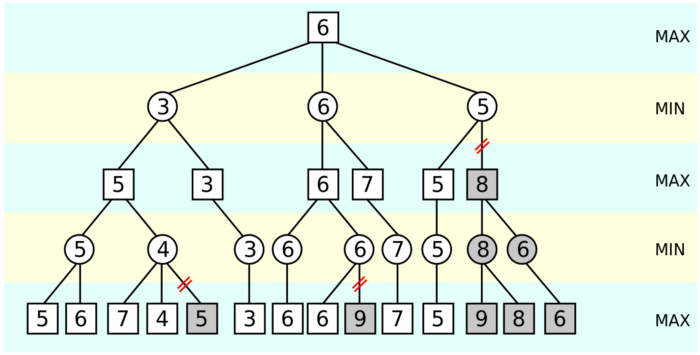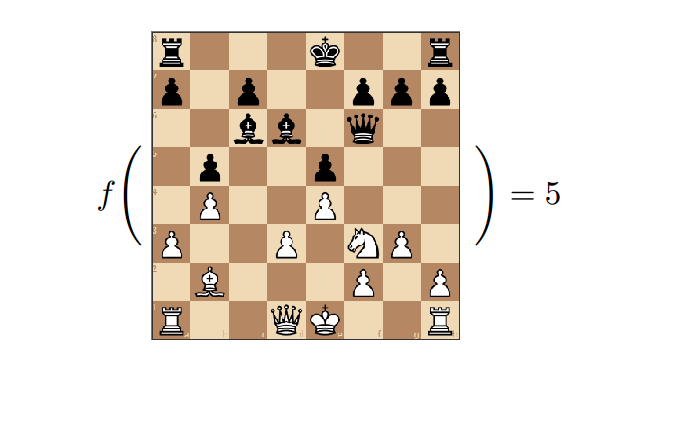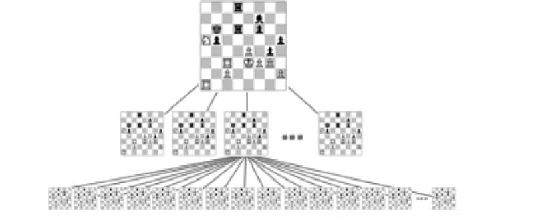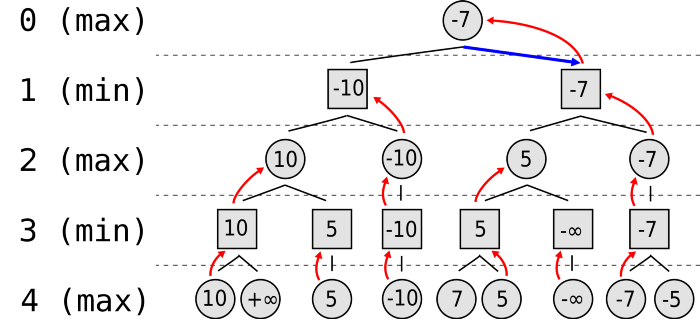chess-ai is a simple chess AI in JavaScript.
`chess-ai` is a simple chess AI in JavaScript.
Report Bug
·
Request Feature
chess-ai is a Simple Chess-AI using Minimax Algorithm. Minimax is a kind of backtracking algorithm that is used in decision making and game theory to find the optimal move for a player, assuming that your opponent also plays optimally. It is widely used in two player turn-based games such as Tic-Tac-Toe, Chess, etc
In Minimax the two players are called maximizer and minimizer. The maximizer tries to get the highest score possible while the minimizer tries to do the opposite and get the lowest score possible. It is because in two player board games, if one player is winning , then the other player must be losing. So one’s profit is directly related to another's loss.
Every board state has a value associated with it. In a given state if the maximizer has upper hand then, the score of the board will tend to be some positive value. If the minimizer has the upper hand in that board state then it will tend to be some negative value. The values of the board are calculated by some heuristics which are unique for every type of game.
Since this is a backtracking based algorithm, it tries all possible moves, then backtracks and makes a decision.
-
Clone this repository as
git clone https://github.com/shie-ld/chess-ai.git. -
Change to the required directory by typing
cd chess-aiin your terminal. -
Start a python http server on your local machine on port
8080assudo python3 -m http.server 8080. -
Now, head to your browser and type
localhost:8080in your search bar. -
Play as white by dragging a piece to your desired location. The AI plays as black. The AI's minimax search depth (which is directly related to how well it will play) can be customised using the 'Search Depth (Black)' dropdown. Using a higher value will improve the AI's accuracy, but it will take longer to decide on the next move.
-
To pit the AI against itself, click the 'Start Game' button under Computer vs. Computer. You can stop the game at any time using the 'Stop and Reset' button.
Getting the GUI and game mechanics out of the way. This allows us to direct our focus towards only the most fascinating aspect of the application: the decision-making (AI) part! For this, we will be using external libraries:
-
chessboard.jshandles the graphical interface, i.e. the chess board itself. -
chess.jshandles the game mechanics, such as move generation / validation.
Now we have a functioning chessboard. But how do we implement an AI that plays (reasonably) good chess? Well, we’re going to need an evaluation function. Basically, we want to assign a score to each chessboard instance (i.e. each set of positions of pieces on the board) so that our AI can make decisions on which positions are more favourable than other positions.
Chess is a zero-sum game. Any advantages gained by Player A implies disadvantages for Player B. Advantages can come in the form of capturing opponent pieces, or having pieces in favourable positions.
Therefore, when assigning a score from our AI’s perspective, a positive score implies an overall advantage for our AI and disadvantage for its opponent, while a negative score implies an overall disadvantage for our AI and advantage for its opponent.
For instance, the score for the starting position is 0, indicating that neither side has an advantage yet. Later on into the game, we are faced with a decision between two moves: Move A and Move B. Let’s say Move A captures a queen, putting our score at 900, while Move B captures a pawn, putting our score at 100.
The AI will be able to compare between the two potential scenarios, and decide that Move A is the better move. Of course, this does not consider future ramifications — what if Move A gives our opponent the opportunity to attack? We will overcome this hurdle in the following sections by performing lookahead to anticipate subsequent moves.
We can represent chessboard positions as nodes in a game tree. Each node is a chessboard instance, and has children corresponding to the possible moves that can be taken from the parent node.
Essentially, minimax aims to minimize the possible losses, assuming both players are rational decision makers. We can represent the possible moves as a game tree, where each layer alternates between the maximizing and minimizing player. We are the maximizing player, attempting to maximize our score, while the opponent is the minimizing player, attempting to minimize our score.
At the leaf nodes, the evaluated score is backtracked. Positive and negative infinity are wins and losses respectively. At each recursive layer, the maximizing and minimizing roles are alternated. Layer 0 is the current game state, and the goal is to maximize our score.
-
We decide on a predetermined depth limit,
k. -
At Layer
0, we consider each of our possible moves, i.e. child nodes. -
For each child node, we consider the minimum score that our opponent can force us to receive. Then, we choose the maximum node.
-
But to know the minimum score that our opponent can force us to receive, we must go to Layer
1. For each node in Layer1, we consider their child nodes. -
For each child node (possible move by our opponent), we consider the maximum score that we can achieve subsequently. Then, the minimum score that our opponent can force us to receive is the minimum node.
-
But to know the maximum score that we can achieve subsequently, we must go to Layer
2. -
And so on.
-
At Layer
k, the final board state is evaluated and backtracked to Layerk - 1, and this continues until we reach Layer0, at which point we can finally answer: “What is the optimal move at this point?”
The algorithm maintains two values, alpha and beta, which respectively represent the minimum score that the maximizing player is assured of and the maximum score that the minimizing player is assured of.
Initially, alpha is negative infinity and beta is positive infinity, i.e. both players start with their worst possible score. Whenever the maximum score that the minimizing player (i.e. the "beta" player) is assured of becomes less than the minimum score that the maximizing player (i.e., the "alpha" player) is assured of (i.e. beta < alpha), the maximizing player need not consider further descendants of this node, as they will never be reached in the actual play.
To illustrate this with a real-life example, suppose somebody is playing chess, and it is their turn. Move "A" will improve the player's position. The player continues to look for moves to make sure a better one hasn't been missed. Move "B" is also a good move, but the player then realizes that it will allow the opponent to force checkmate in two moves. Thus, other outcomes from playing move B no longer need to be considered since the opponent can force a win. The maximum score that the opponent could force after move "B" is negative infinity: a loss for the player. This is less than the minimum position that was previously found; move "A" does not result in a forced loss in two moves.
See the open issues for a list of proposed features (and known issues).
Contributions are what make the open source community such an amazing place to be learn, inspire, and create. Any contributions you make are greatly appreciated.
- Fork the Project
- Create your Feature Branch (
git checkout -b feature/AmazingFeature) - Commit your Changes (
git commit -m 'Add some AmazingFeature') - Push to the Branch (
git push origin feature/AmazingFeature) - Open a Pull Request
Distributed under the MIT License. See LICENSE for more information.
Project Link: https://github.com/shie-ld/chess-ai










